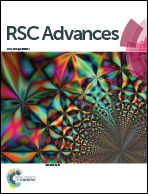Influence of high-mannose glycan whose glucose moiety is substituted with 5-thioglucose on calnexin/calreticulin cycle†
Abstract
Our study first revealed that UDP-5-thioglucose functions as a glycosyl donor of UDP-glucose: glycoprotein glucosyltransferase to produce 5-thio-glucosylated Man9 (5S-G1M9). Subsequently, we observed that only calreticulin can interact with 5S-G1M9. Finally, the 5-thioglucose residue was resistant to hydrolysis by glucosidase II.


 Please wait while we load your content...
Please wait while we load your content...